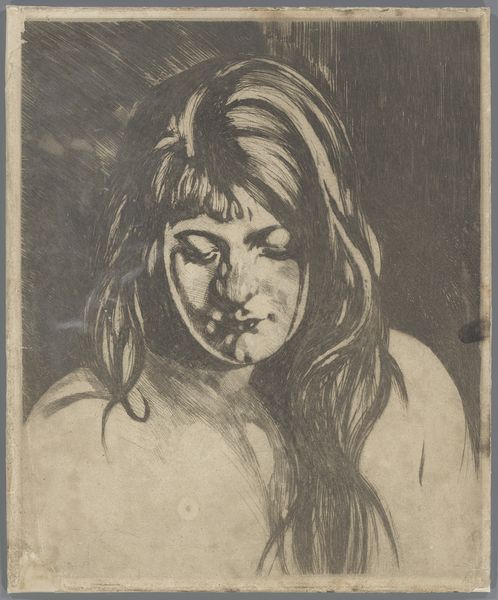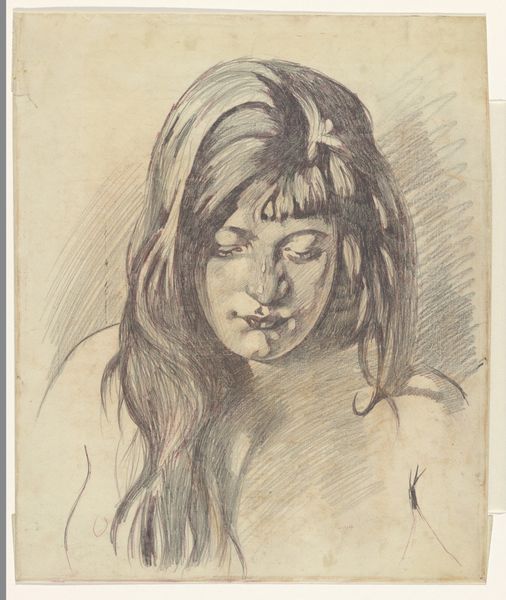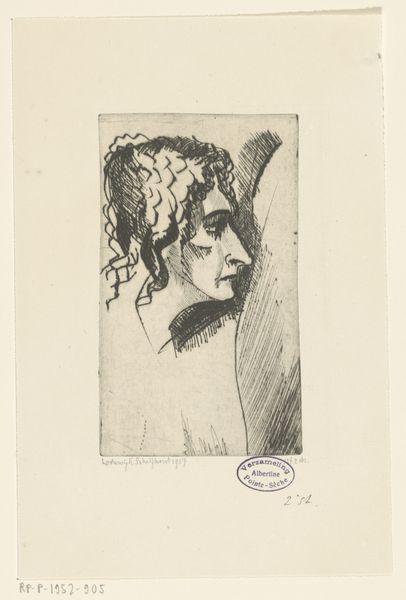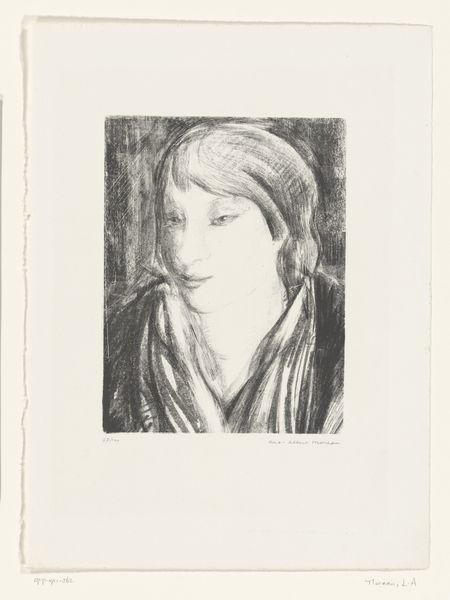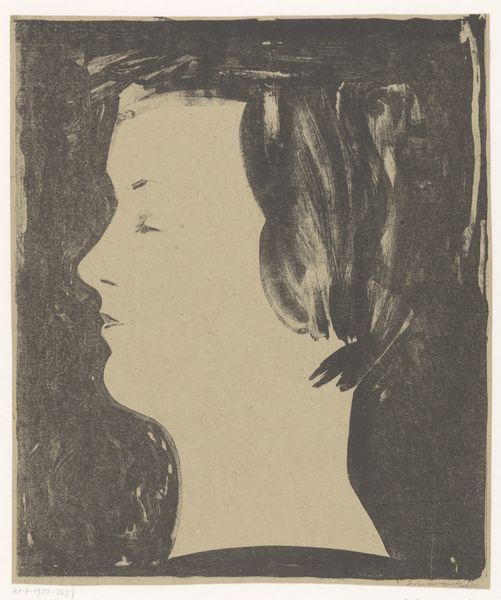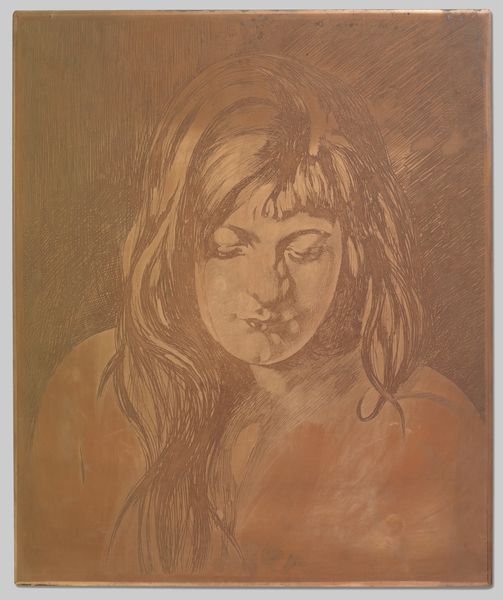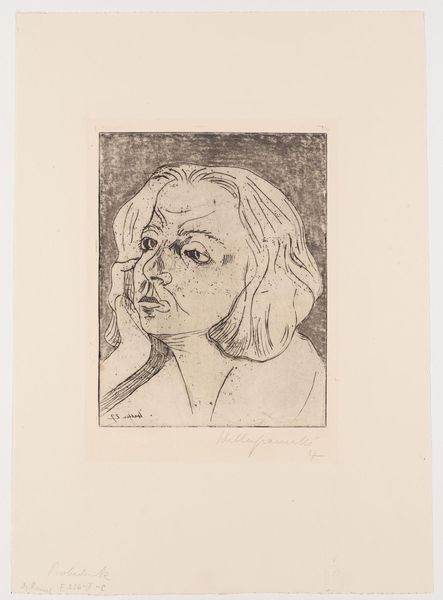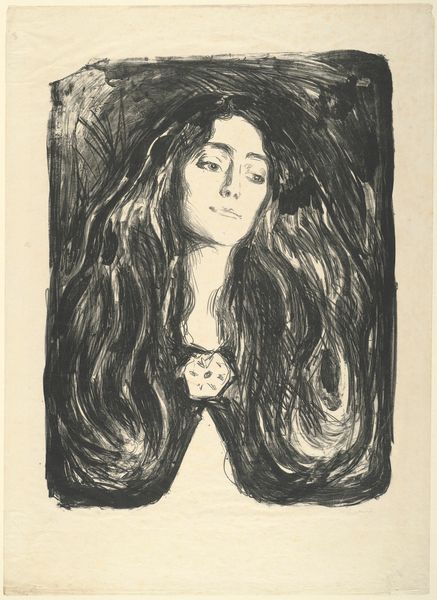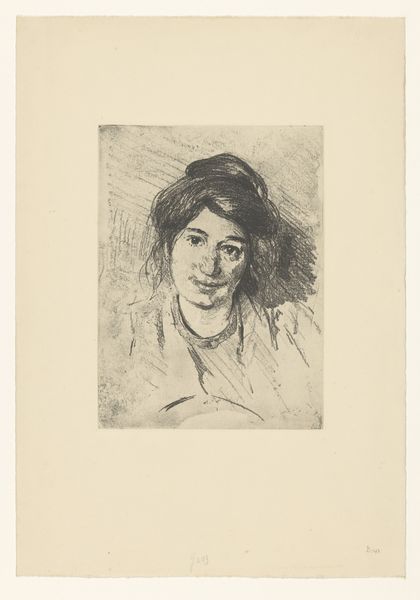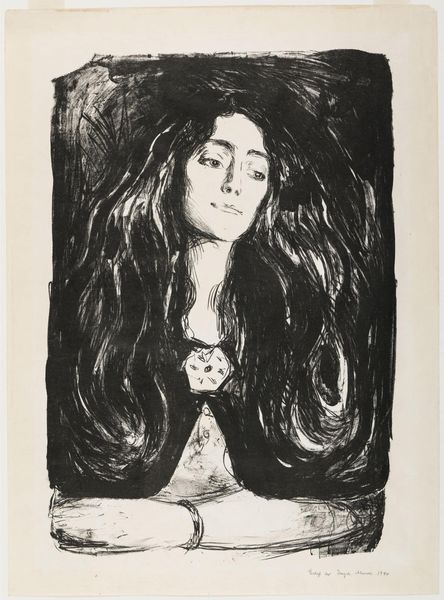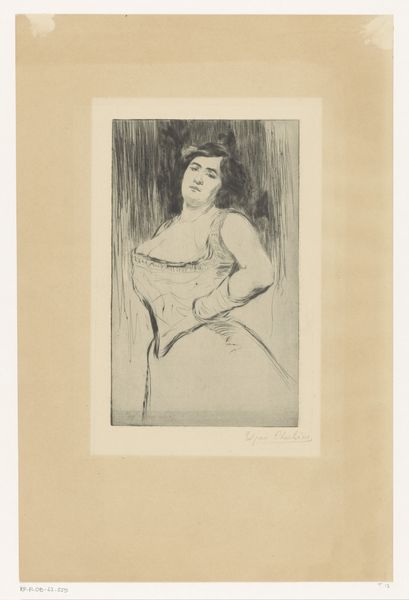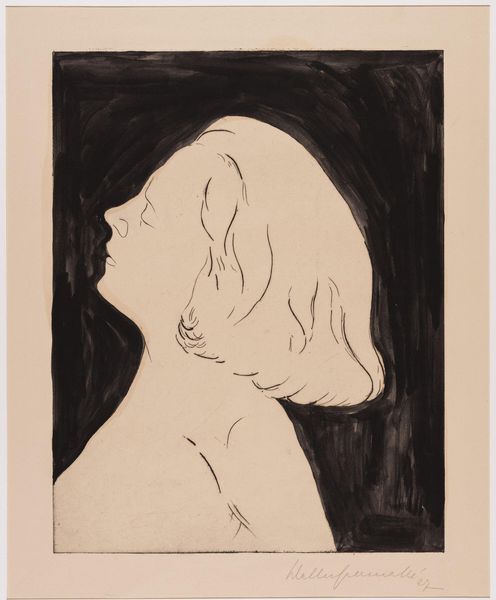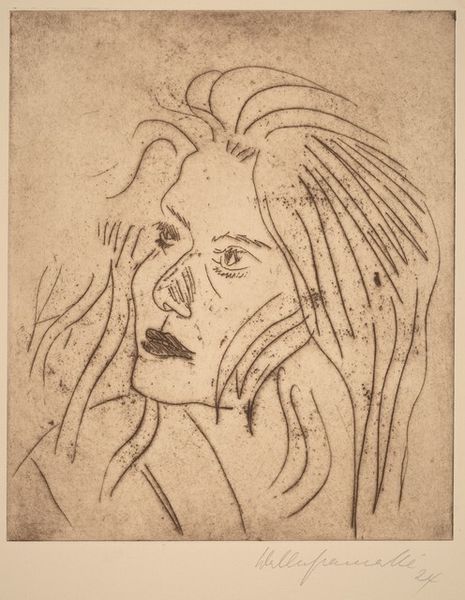
drawing, print
#
portrait
#
drawing
# print
#
figuration
#
portrait drawing
Dimensions: height 409 mm, width 338 mm
Copyright: Rijks Museum: Open Domain
Curator: This is Willem Witsen’s “Head of a Woman with Loose Hair,” a print, dating back to around 1919. You can find it here at the Rijksmuseum. Editor: Immediately, I'm struck by the sitter's downcast gaze. It evokes a sense of melancholy, almost a private moment of introspection. The monochromatic palette amplifies this quiet drama. Curator: It's interesting that you pick up on that, given the historical context. Witsen was working in a period marked by significant social upheaval following World War I. Do you think that sense of unease translates into the depiction of women at this time? The piece really makes me question what kind of interiority was permitted - or expected - for women in art during that era. Editor: I definitely see that tension at play. The loose hair can be interpreted in many ways – perhaps a symbol of emerging freedom for women, or maybe it emphasizes her vulnerability, being undone. Also, what about the way the light falls on her face, emphasizing only parts of it, obscuring others. She almost appears to be receding into the darkness. Curator: It certainly resists idealization. In contrast to the often highly polished depictions of women at that time. The roughness of the print, with its visible lines and imperfections, brings a modern eye that seems in search of the real beneath the societal expectations. Editor: I find that contrast compelling. This is art pushing against prevailing narratives about feminine ideals. Do you think this artwork influenced the reception of new and daring feminist literary pieces from this era? Curator: It's certainly part of a broader movement challenging traditional portrayals and assumptions. I think it created an artistic conversation of what was happening, helping shape a space where marginalized voices could be heard and perspectives reframed. Editor: Looking at the art from this time also forces the audience to look inwards, encouraging us to question who benefits from oppressive stereotypes and exclusionary behavior. Curator: Precisely, and what new realities might come into being through visual pieces like this! Editor: Art acts as a constant teacher to everyone and society always benefits when given opportunities to relearn values through it.
Comments
No comments
Be the first to comment and join the conversation on the ultimate creative platform.
